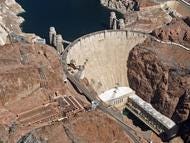Classes of DEFRs
Some Essential, All Expensive
It is broadly, though not universally, acknowledged that a Net Zero electric grid powered predominantly by intermittent renewable generation sources such as wind and solar would require support from dispatchable generation sources to “fill in the blanks” when wind and solar were unavailable or inadequate to meet the demands of the grid. These sources are generally referred to as Dispatchable Emission-Free Resources (DEFRs).
There are fundamentally two classes of DEFRs, those that depend on the output of the intermittent renewable resources for their operation and those which are able to function independent of the renewable generation.
The primary dependent DEFRs are storage batteries, pumped hydro dam complexes and Green Hydrogen systems. The primary independent DEFRs include hydroelectric dam systems, geothermal steam systems, biomass generation systems, wave energy systems, ocean thermal energy systems and small modular nuclear reactors (SMRs).
Battery storage systems and pumped hydro storage systems are currently in use on a limited basis. Green Hydrogen is being pursued as a possible long-duration storage solution to cope with weekly, monthly, seasonal and annual renewable availability variations. However, current battery storage is extremely expensive and most suitable for short-term storage (2-4 hours). Pumped hydro systems are also expensive, but have faced strong resistance from citizen groups in the US. Green Hydrogen is the most complex potential storage solution, requiring sea water desalination, water hydrolysis, hydrogen compression, transmission and storage and either combustion turbine or fuel cell power generation resources.
The dependent DEFRs require the availability of surplus renewable electricity to be stored for later use. Their charging cycles are parasitic to the renewable grid. Battery systems have the highest round-trip efficiency (~95%) and thus require the least surplus energy per unit of delivery capacity. Green Hydrogen has the lowest round-trip efficiency of the dependent DEFRs (~50%) and thus requires nearly twice as much surplus energy per unit of delivery capacity.
Hydroelectric dam systems, geothermal generation and biomass generation are currently in use on the US grid, although they are currently used primarily to supply baseload generation rather than as DEFRs. There is strong environmentalist resistance to new hydroelectric dams and strong pressure to remove existing dam systems. The availability of natural geothermal steam sources is limited, though there is significant potential for expansion into dry hot rock geothermal with the application of hydraulic fracturing. Biomass generation is of questionable environmental benefit and its expansion is likely to be limited. There are numerous RD&D programs underway to develop small modular nuclear reactors which would be inherently safe and have the ability to load follow, which would make them ideally suited as DEFRs, assuming that the environmentalist resistance to new nuclear generation can be overcome and system costs can be reduced.
The independent DEFRs do not require the availability of surplus renewable electricity. In fact, the independent DEFRs would not require the existence of intermittent renewable generation to support a reliable grid. They effectively render the renewable generators redundant; and, redundancy is expensive.
Originally published here.

